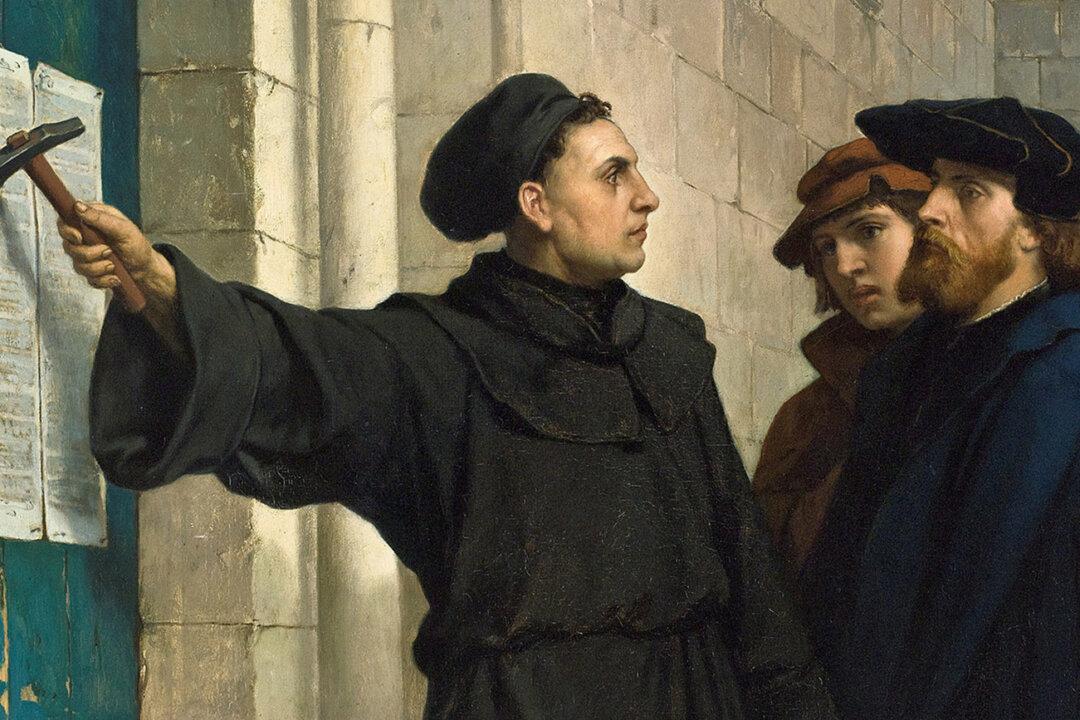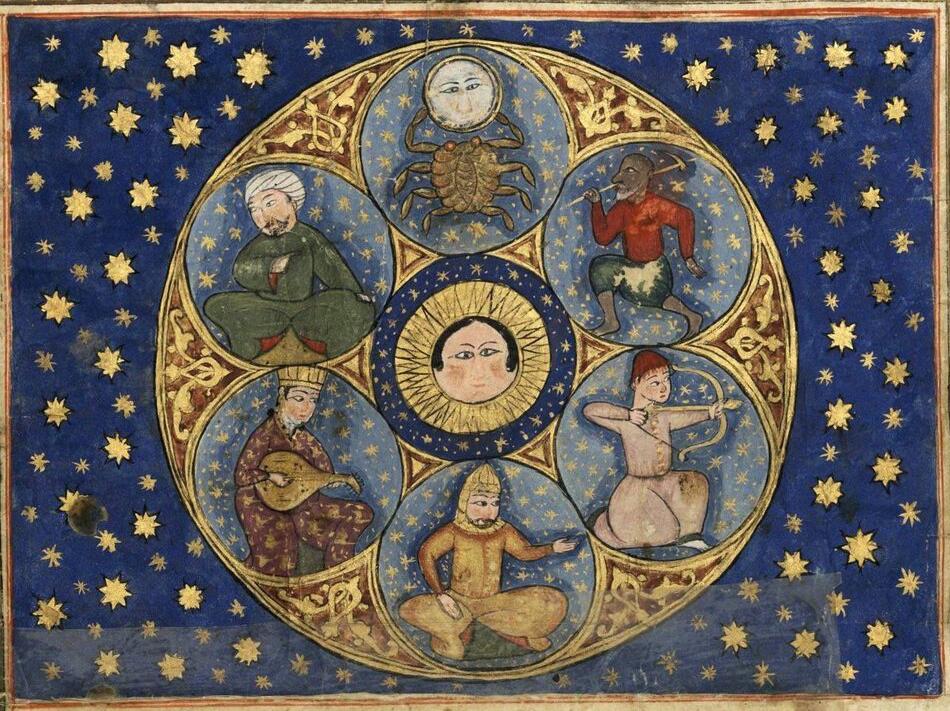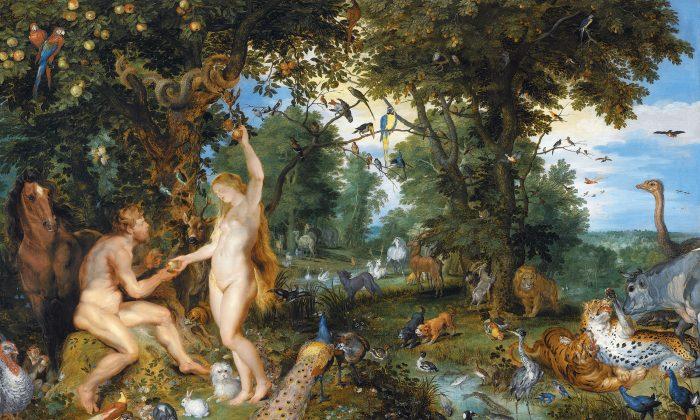I claim—unapologetically—that after the unity of one, the concept of three is the most important of all.
Clearly, three has very important resonances in theology and myth: The three greatest gods of the Greek Olympian pantheon were the three brothers Zeus, Poseidon, and Hades. And the three greatest gods of Hinduism are Brahma, Vishnu, and Shiva. In Christianity, we find the Trinity of three persons (Father, Son, and Holy Spirit), yet one God is central.

There is a profound sense in which this three-in-one idea is not just some made-up myth (in the derogatory sense of the word “myth”), but actually an aspect of reality that we often fail to notice.
When we look at the structure of our universe, for example, we find three-in-one everywhere! Space is one concept, but it is made up of three dimensions: length, breadth, and height. Time is one concept, but it too has three dimensions: past, present, and future. Mass exists in three states: solid, liquid, and gas. Philosophy—rationality itself—can be seen to be the workings out of thesis, antithesis, and synthesis. Human beings traditionally were said to have a body, mind, and spirit. The list goes on.
Three Elements of Proof
Let’s consider three means of proof. First, tradition is a form of proof. What was said or done or practiced before—it worked then, didn’t it? So why change anything now? And incidentally, this isn’t just about religious or social practices. Science is equally culpable of its own traditions which invariably resist changes and advances no matter how compelling the new evidence. As Thomas Kuhn observed in his book “The Structure of Scientific Revolutions,” published in 1962, scientists focus on refining and extending the established theories rather than challenging underlying assumptions.If we consider religions, certainly the Catholic Church has always had a strong traditional element, and indeed this very tradition became one of the areas of contention during the Protestant Reformation. Protestants found proof for their views, not in traditions but in a second way to establish truth.

The second way is that of authority. Scriptures or, more generally, books or learnings that can be inspected physically and formally are a source of proof. We have already alluded to the Protestant rejection of some Catholic traditions, and why was that? Because they sought proof for their beliefs in the Bible, which they viewed as being at odds with some Catholic traditions.
Ironically, when the Protestants began, they had the Bible but no traditions, since by definition that religion had just started. Four hundred or so years later, they all, in their different denominations, accreted loads of traditions. If Protestants are going to be consistent, they would need to examine these in the light of what the Bible is telling them.
Finally, the third source of proof is (and we might use various words here) our conscience, our inner witness, our “still small voice,” our intuition—something within us tells us whether something is true or false or right or wrong.
If we return to the split of Protestantism from Catholicism, we can note that very quickly after the Protestant movement gained traction across Europe, it itself split. To mention just one of the significant splits: The Quakers rejected Christian traditions as well as the sole authority of the Bible, and instead replaced it with the “Christ within,” the Word that speaks internally to the human soul: the direct voice of God as speaking through the conscience.

When One Proof Dominates
This is all very interesting but how is it relevant now? The trouble is that we tend to favor one major path often to the exclusion of the other two, or sometimes we have a second way as a lesser backup, but the third element is ignored or even demonized. This impoverishes us and leads to big problems as we shall see.Taking a historical view, we see that these three ways to truth are themes dominating whole ages of European history, a sort of leitmotif running through various ages. Let me explain.
During the European Middle Ages, proof through tradition predominated as it was valid in all aspects of life: the feudal system, the Catholic hierarchy, and the fact that printing presses had yet to be invented.

With the emergence of the Renaissance, the Reformation, and the arrival of the printing presses, the world moved into its authority phase: Proof was to be found in Scripture and authoritative writings. People argued about what was in the texts. I think of characters like the epic poet John Milton, taking on all-comers through print to validate the English Republic (as was).
Of course, I am not suggesting that during these two eras everyone relied on one (tradition) or the other (authority), for there was and is always a mixture. For example, the Quakers offer a different perspective for the proof of their religion.
In Europe, it would seem as if we had some 500 years or so of values and proofs based on traditions, followed by 400 years of these based on authority of the book being central, and now we are in a different phase of human existence.
After World War II, post-structuralism, and post-truth, we are now in the era where the dominant proof is the voice within us. Only now, this has weirdly become not the conscience that the Quakers originally approved of, not the spiritual enlightenment of Eastern religions and mystics in other traditions. No, it has become a solipsistic place where what I “feel” must be right and trumps any objective reality, any facts, and any consideration of any conflicting data or opinions or counterarguments.
We have somehow engineered a world in which complete subjectivity has replaced traditional values and scientific authority. And for the “believers,” this is their religion.
This is extraordinary in every way: Men are women, women are men; free speech, free thought is bad because it’s upsetting and making people uncomfortable; genocide is good “in context,” and so on. All sorts of preposterous and abhorrent ideas that any reasonably educated person would have dismissed out of hand only 20 years ago have now become mainstream beliefs, “proven” beliefs.
These are proven, of course, because there are no traditions of knowledge that are common and shared; and there are no books or scriptures that have any authority. And people, especially young people, don’t read books like they used to.

So, in the vacuum of tradition and in the absence of books of learning, and without any training in the disciplines of prayer, meditation, mindfulness, and such, the fatuous belief that what I am thinking must be right (no matter how little thinking is actually going on) has prevailed and become a major component of our culture. Dangerously, it is a death culture.
The first step in countering this tendency is to recognize it for what it is. The second step is to acknowledge the three paths of proofs. We need all three. And the third step is to go on the offensive—wherever we find it—and challenge all this absurd subjectivity: Challenge it with great ideas from our great traditions (and say why they are great) and also through using the great learning that comes from studying books, be they historical, scientific, or religious.
Ultimately, it is not the U.S. military that is going to save Western civilization, if it can be saved, but a collective will to reestablish vital traditions and revive true learning, especially of a spiritual nature.








